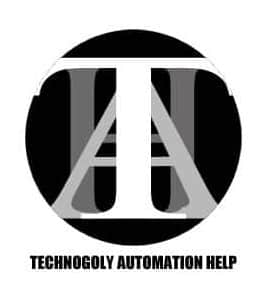Historic Collaborative Research Agreement
BRAMPTON, ON. Technical and Automation Help Corp. (TAH), a Brampton-based automation technology company has entered into a historic Collaborative Research Agreement with Sheridan College Institute of Technology and Advanced Learning. The project is leveraging funding to Sheridan from the Federal Economic Development Agency for Southern Ontario (FedDev) Regional Innovation Ecosystems (RIE) program, through the Southern Ontario Network for Advanced Manufacturing Innovation (SONAMI) which supports the advancement of manufacturing technologies in Southern Ontario. TAH and the Centre for Advanced Manufacturing and Design Technologies (CAMDT) at Sheridan College will begin the collaboration with a one-year applied research project.
The collaborative partnership between (TAH ,CAMDT and ACBN)
The collaborative partnership between TAH, Centre for Advanced Manufacturing and Design Technologies (CAMDT), ACBN Canada and seeks to advance the High-Speed Robotic Cladding (HSRC) system to improve the automated cladding processes, with the goal to integrate a robotic welding system with pre-set parameters and cladding techniques. These parameters are unique and specific to each type of cladding required. Metallic cladding on steel parts prolongs the integrity of the steel, and the HSRC system enables an even longer part life and reduces the overhead cost associated with cladding. This substantial improvement is the reason the new technology is expected to disrupt the cladding manufacturing industry upon implementation.
TAH collaboration with CAMDT
The TAH collaboration with CAMDT will comprise a build and integration of the HSRC system, followed by the critical incorporation of the data parameters. Through the contributions of Sheridan subject matter experts working with TAH, data communication such as the parameters and patterns in the system, which are proprietary to TAH’s technology, will be secured. The systems will allow wired and wireless communication capability along with layers of security around the robots, and welding controllers to protect information from compromise during data transfer from a remote location and local storage.
“We are looking forward to collaborating on this multifaceted, interdisciplinary project to move High-Speed Robotic Cladding forward, which will combine portions of robotic integration, system programming and industrial cybersecurity carried out by one team,” says Dr Carolyn Moorlag, Director of CAMDT.
Because clad welding technology has not experienced disruptive innovation, the welding rates, cladding rates, and productivity rates have not increased since their inception in the early 1960s, yet production and labor costs have continued to rise. TAH’s High-Speed Robotic Cladding system improves the cladding speeds and productivity through automation. For example, the typical welding rate (how fast one can attach the welding wire to the material) is five inches per hour. However, with TAH’s new technology, welding rates can increase to 37 inches per hour. Increased production capacity and reduced costs mean that companies previously unable to access cladding technology due to its prohibitive cost will now have a chance to participate, compete and use the technology.
Partnership
This partnership is important because TAH Founder and CEO, Mr. Harris, originally from Barbados, had a specific lens in mind when engaging with Sheridan College to advance his technology. It is a primary goal of the project to ensure that students working on it are representative of the larger community and that recruitment effort encourage participation from Black, Indigenous, racialized and women students. Sheridan is highly supportive of this goal, which directly aligns with Sheridan’s commitment to the Dimensions Charter: Equity, Diversity and Inclusion Canada and its broader institutional commitments to advancing equity, diversity and inclusion and to building inclusive communities. Persons from those communities, interested in advanced robotics, skilled trades, and industrial programming, are encouraged to apply Mr. Harris says,
“Our worldwide patent allows us to have a foothold in global markets. We’re in the process of digitizing new systems, and we are in discussions with several large manufacturers in Canada and the US to adopt this technology. It is important to us at TAH that Black, Indigenous and People of Color communities be a part of this revolution and have access to advanced robotic learning and production.”
You can check out our press release here.
For any media inquiries or partnerships, please contact Technical & Automation Help Corp.



Congratulation! Good Job.
Thank you, Mike